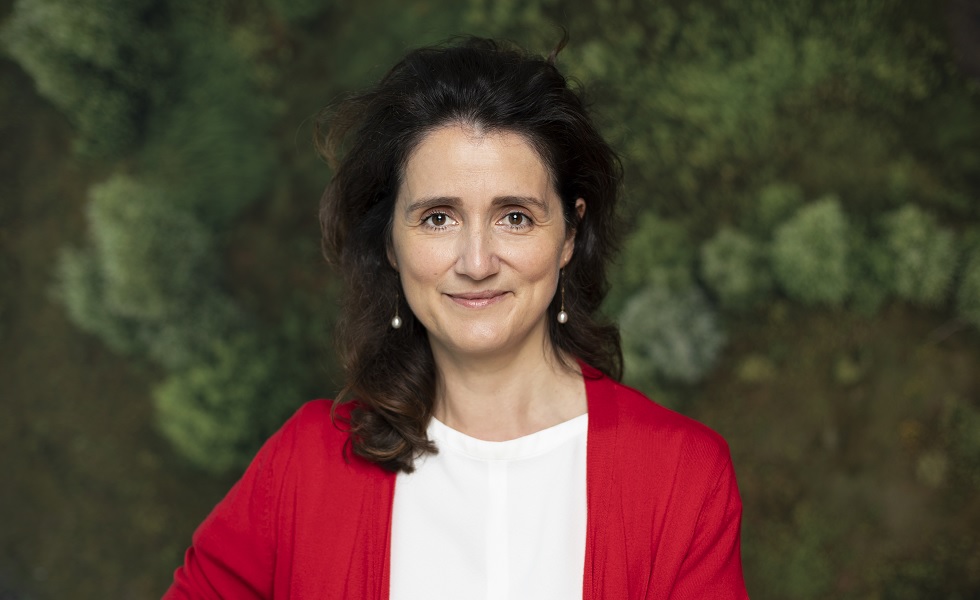Jelena Stamenkova van Rumpt: Decarbonisation - it’s all in the details
Jelena Stamenkova van Rumpt: Decarbonisation - it’s all in the details

There is a great deal of noise surrounding ESG. Greenwashing, ambiguity and complexity make the task seem overwhelming at times. ‘Investors must learn to cut through the noise and take decisive and specific action’, according to Jelena Stamenkova van Rumpt, Director for Responsible Investment at Anthos Fund & Asset Management.
By Wim Groeneveld
Why should investors set a net zero approach? And what are the key components?
‘A net zero ambition is a time-bound and specific goal that could tackle two material objectives: managing investment risks stemming from climate change (regulation, or reputation) and creating a positive impact and change in the real economy. This moves beyond general ESG to targeted and specific action, which can then be broken down into specific and timebound sub-targets.
Before setting your net-zero approach, you should determine your objectives. Why do you want to reduce your carbon footprint? Risk, impact, or both? And how can you make sure that through your business model you can contribute to or stimulate the change that needs to happen? In answer to the ‘how’ question, the approaches suitable for most institutional investors are: engagement and voting, allocating capital to solutions and avoiding or excluding investments.
Underpinning these implementation strategies is the need for sophisticated reporting and consistent and smart ways of monitoring, which the industry is moving towards in the wake of regulations like the EU taxonomy, the Taskforce for Climate-related Disclosure (TCFD), the Sustainable Financial Disclosure Regulation (SFDR), and initiatives like Carbon Disclosure Project (CDP). This is what we now expect from the funds we invest in. Joining industry initiatives and communicating learnings to help others is a final, crucial component.’
How far does the influence of investors in listed companies really go? Are we placing too much trust in engagement?
‘From 2009 to now, engagement has moved from a relatively unstructured dialogue that measured numbers of emails or meetings, to consciously-designed programs with pre-set objectives, specific companies and collaboration with partners to maximise influence. The collective influence of shareholders is growing as investors get better at engaging for specific outcomes. Initiatives like the Science-based targets (SBTi) and CDP are important because they inform what the outcomes should be, they provide frameworks, a common language and definitions, as well as create transparency, and they make it easier for investors to collaborate with investee companies and send the right message. The more who join such collectives, the more credible engagement efforts become.
There still needs to be improvement in how engagement is done, tracking real outcomes and measuring impacts. Watch out for whether engagement is simply an excuse for not divesting. Feasibility to engage successfully is also key. Can investors exert the influence needed to bring about change? These questions should be addressed thoroughly in the due diligence process.’
How important are Scope 1 & 2 emissions of the underlying companies in your investment decision making?
‘We monitor these emissions, but we do not rely on them for investment decisions yet. As an indirect investor, we are more concerned with the quality of the strategy, the manager’s ESG integration and the strength of their impact thesis. We assess this through a qualitative assessment of the processes, the strategy and the implementation using our proprietary ESG and impact scorecards, which we developed based on our experience and the best industry standards. Our preference is that investment decisions are always based on this holistic and complete approach.’
With more transparency and complete data on carbon emissions, there won’t be many places to hide for companies and investors who have made pledges.
What are your opinions regarding divesting from selected companies or funds?
‘Change needs to happen in the real economy, where it will be felt by relevant stakeholders. It is better to engage via a sophisticated process. The ideal would be one with set targets, measurement of activities, outputs and outcomes. Ideally one with escalation strategies and a clear rationale. This approach should be taken not just for a small group of companies in the portfolio, but with all the heaviest emitters. Once every avenue has been tried and no improvement has been made, then divestment must be considered to send a signal. This is the approach all of us should strive for.
Most investors agree on this approach. We can use capital to steer the economy in the right direction, but of course there are different degrees of separation (direct versus indirect investing, private versus listed), which makes it crucial to identify the levers that you can pull to influence this change. If engagement is simply not possible, or done to a high enough standard, then divestment should be considered.’
2023 to 2025 is called a policy tipping point and 2025 will be critical. What will be the consequence when emissions are not reduced enough to be on the Paris Aligned Pathway – for investors with pledges and for companies?
‘Judging by the current regulatory trajectory, our best guess is that regulation will play an important part once the market has adjusted to the new status quo. Consider the regulatory changes that followed the 2008 financial crisis and the market’s attitudes to financial risk. With more transparency and complete data on carbon emissions, there won’t be many places to hide for companies and investors who have made pledges. It is in investors’ and companies’ interests then to use their influence to decarbonise their portfolios and operations proactively.
A question that keeps me up at night is what impact deep, structural changes to decarbonise the economy will have on people. In practice, investors should be mindful to ask how ‘just’ investee transition plans are. Watch out for virtue signaling via marketing tactics and demand evidence and outcomes of employee and union involvement with the leadership teams when it comes to strategic changes stemming from decarbonisation plans.’
Do you have some final thoughts?
‘Climate is a complex system where biodiversity, human rights, environmental changes and living beings are interrelated. Investors must strive to remember this whole picture and to deal with the complexity, to understand it and create networks of collaboration to tackle systemic issues together.
From time to time, we necessarily have to simplify the science in order to set achievable and specific targets. Doing this, and focusing on one or two minute details, enabled us to focus and so embed climate in every layer of business. Now we need to do this again with the other, equally important parts of the system, such as biodiversity and human rights.
This, in my view, is the only way that we will look at this time in history and say that we took a turn for the better as humanity. That’s a big task, but specific action requires investors to get comfortable with the details.’
|
SUMMARY The key components of a net zero approach are engagement and voting, allocating capital to solutions, and avoiding or excluding investments. The collective influence of shareholders has been growing over the years and investors are getting better at engaging for specific outcomes. It is best to engage via a sophisticated process. Ideally one with escalation strategies and a clear rationale. Investors should create networks of collaboration to tackle systemic issues together. |









